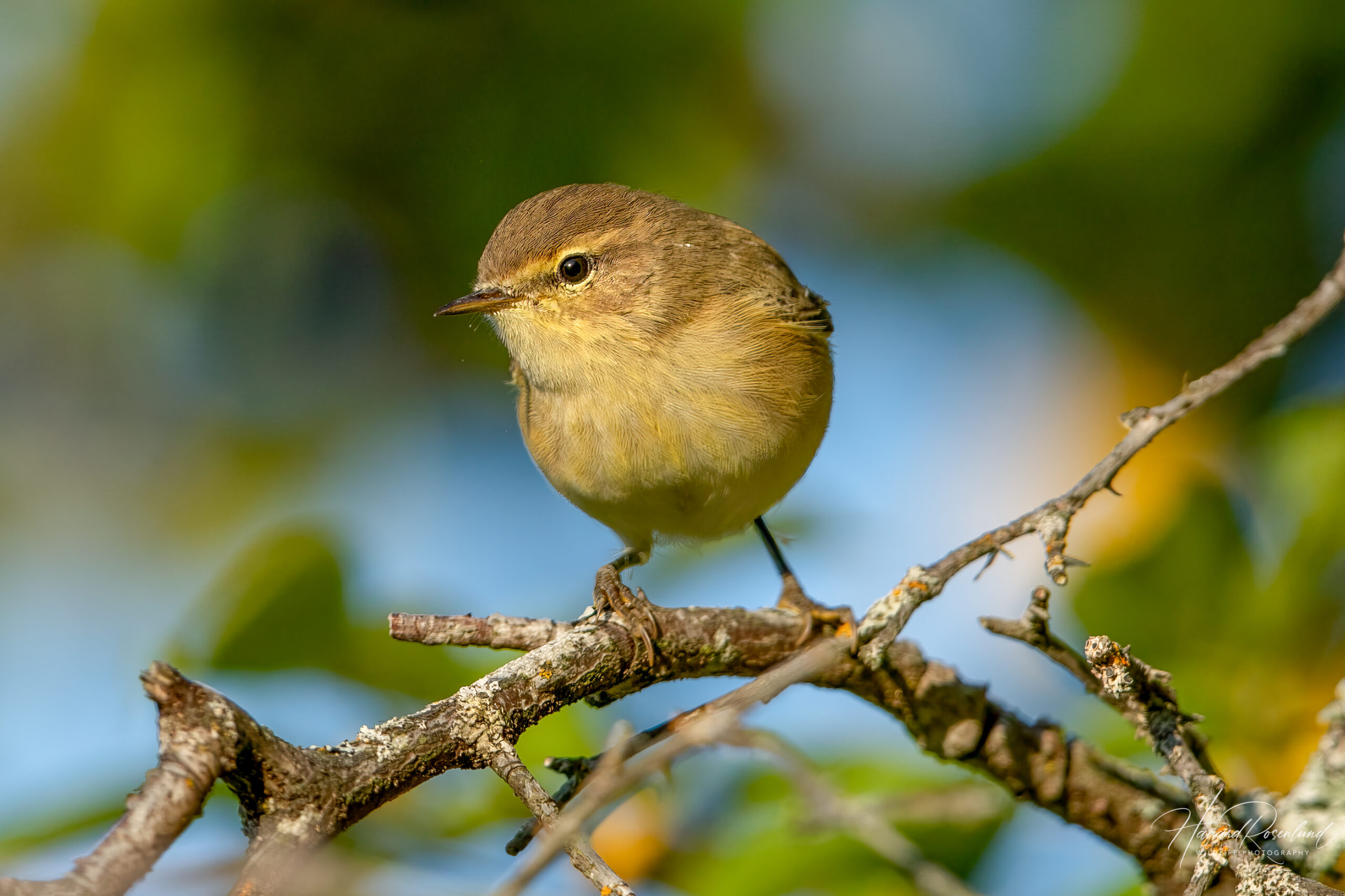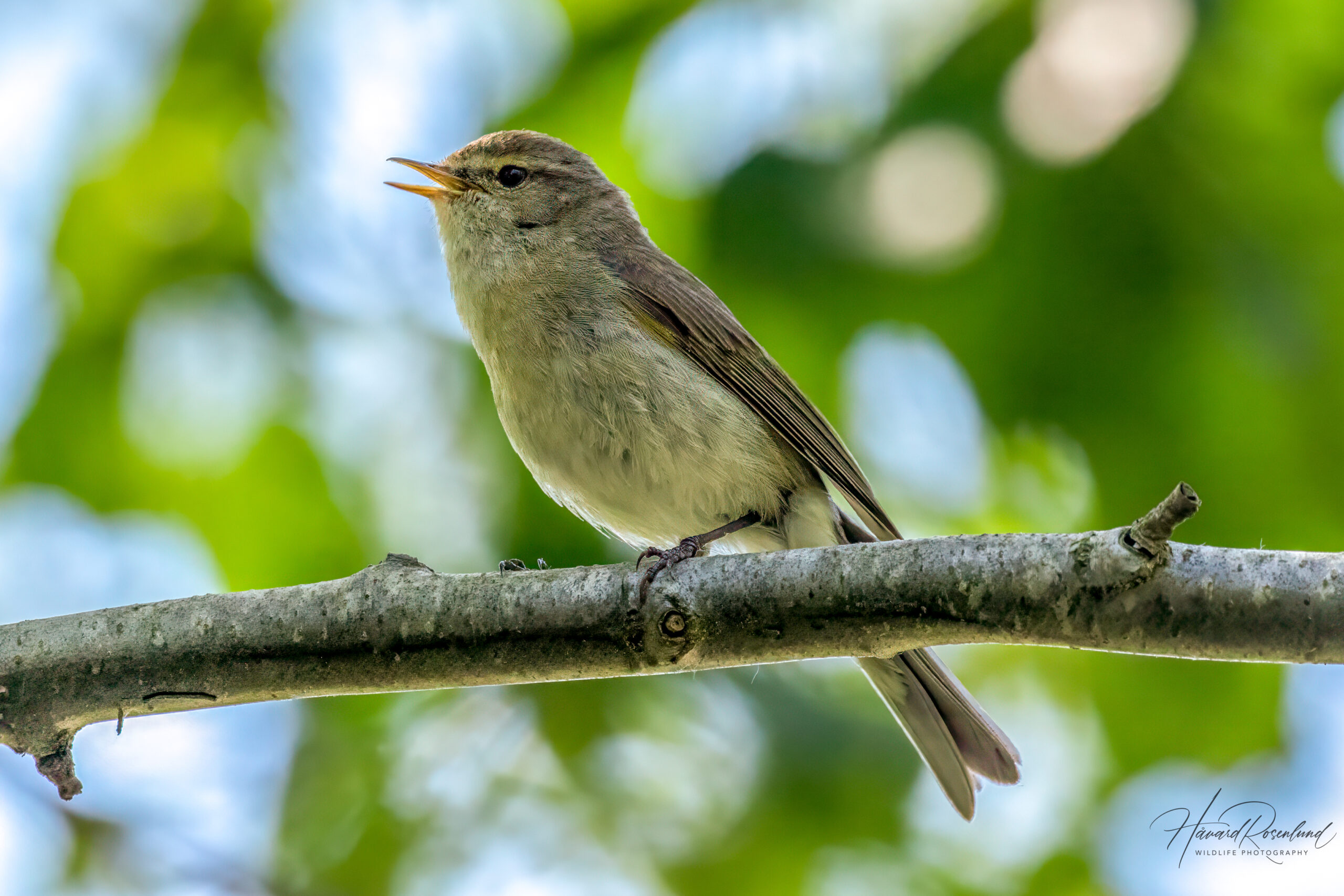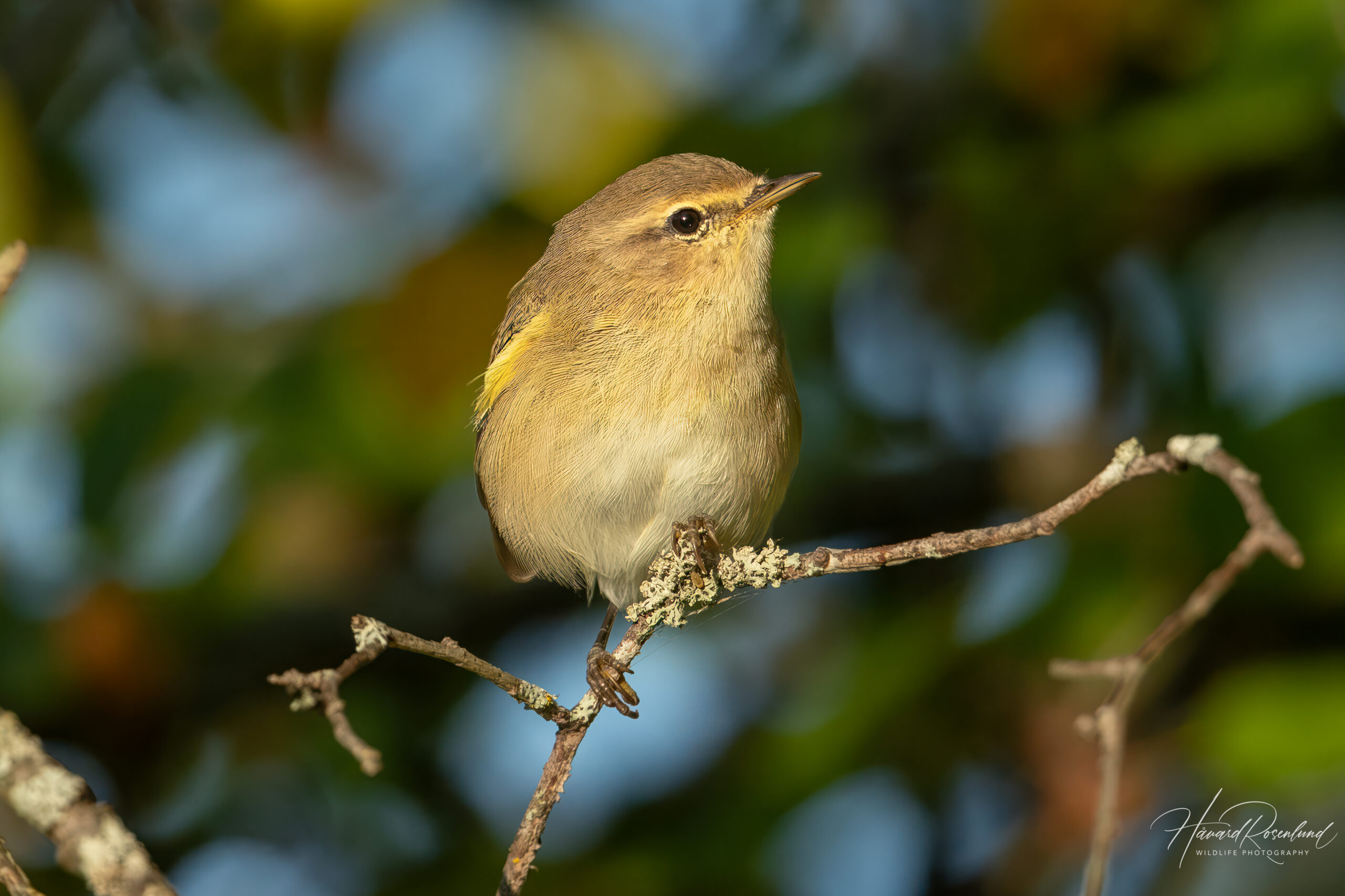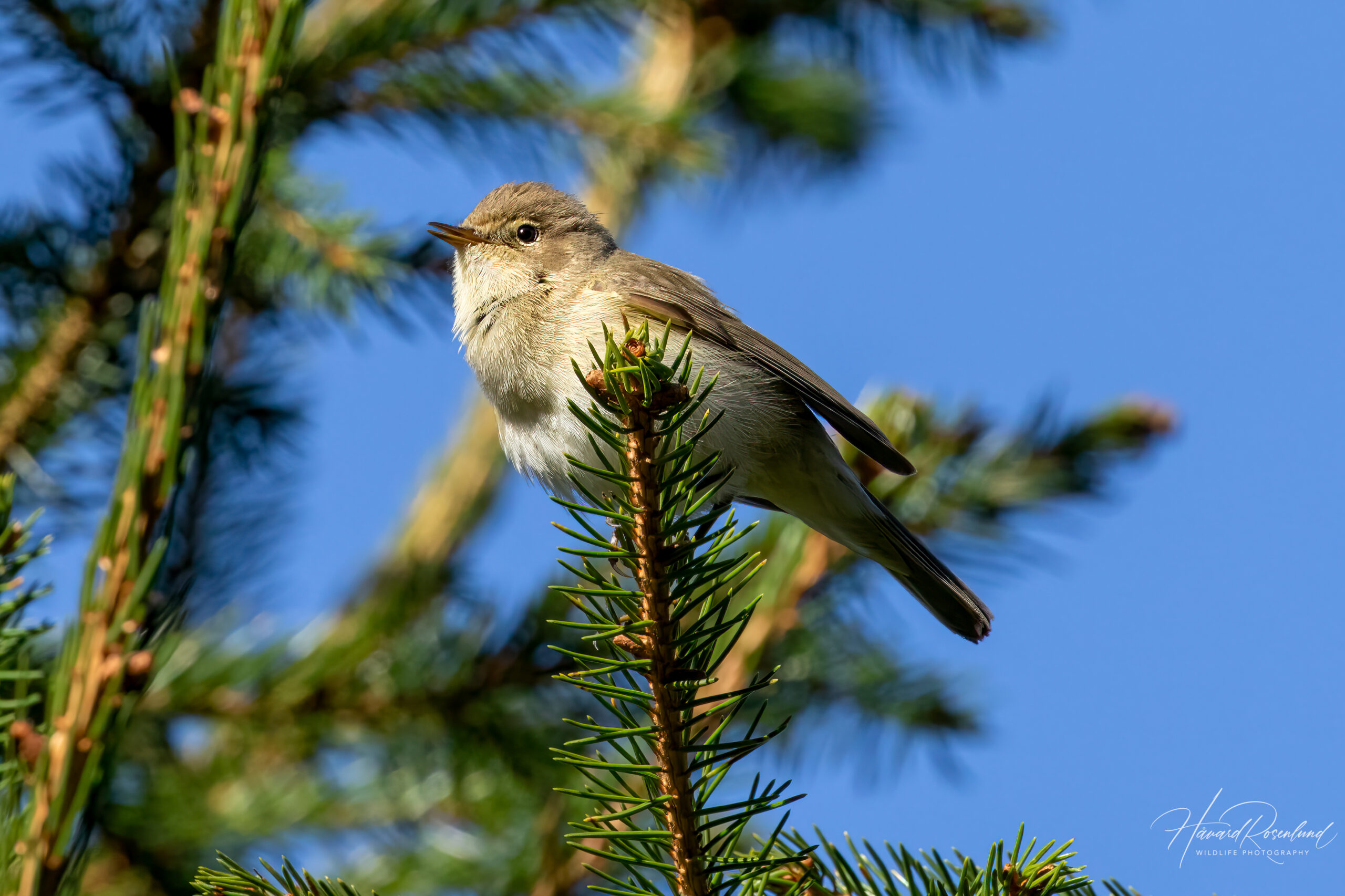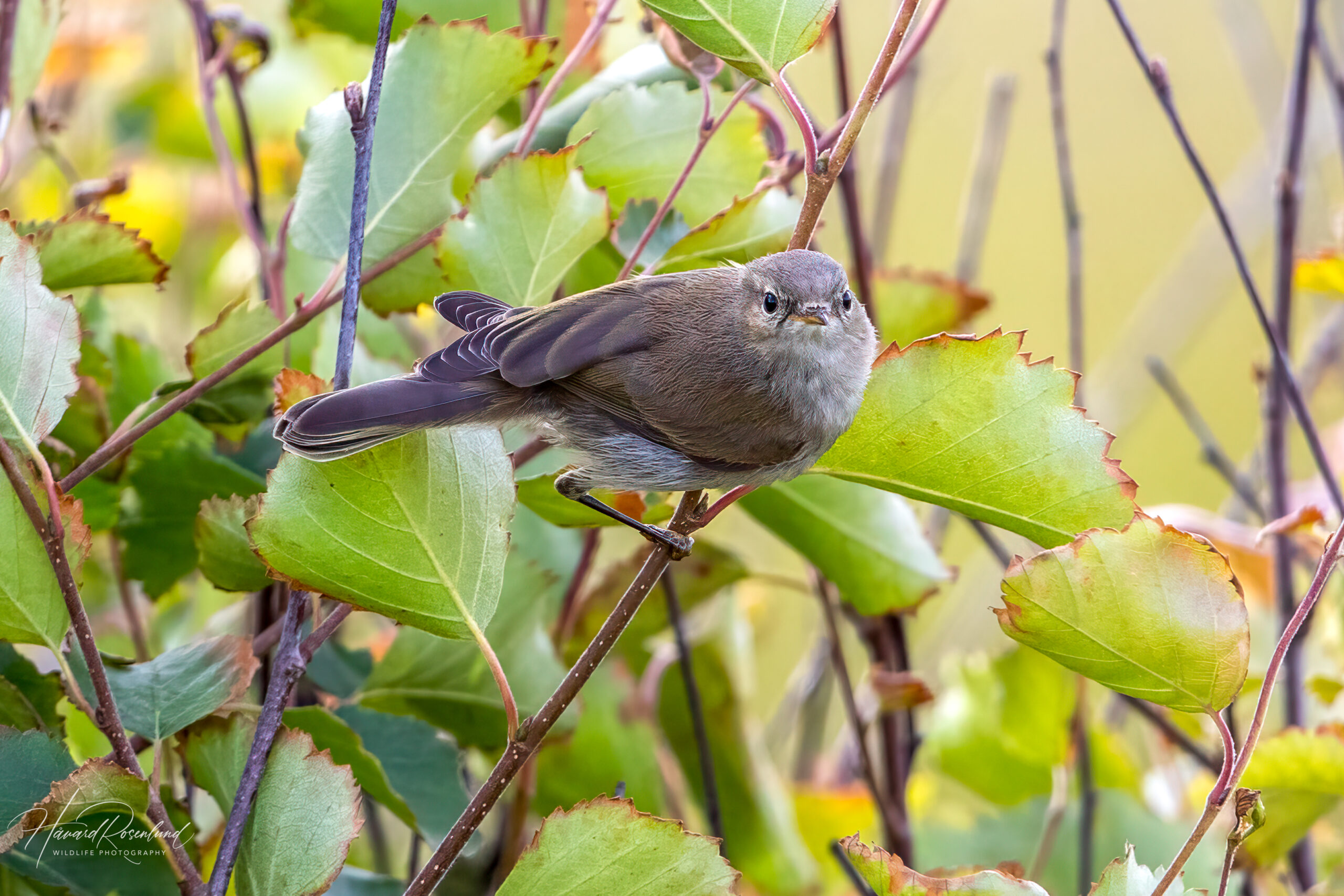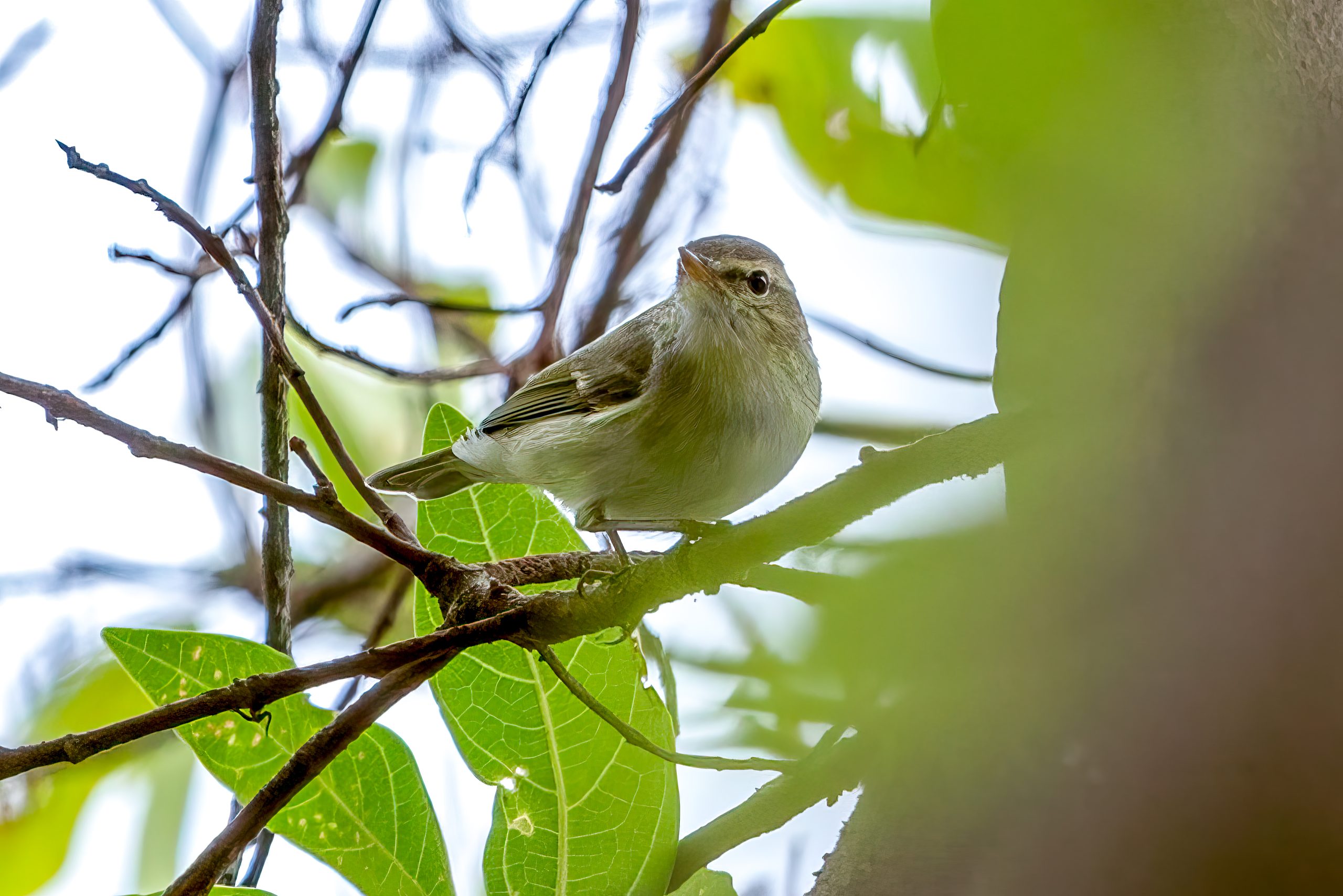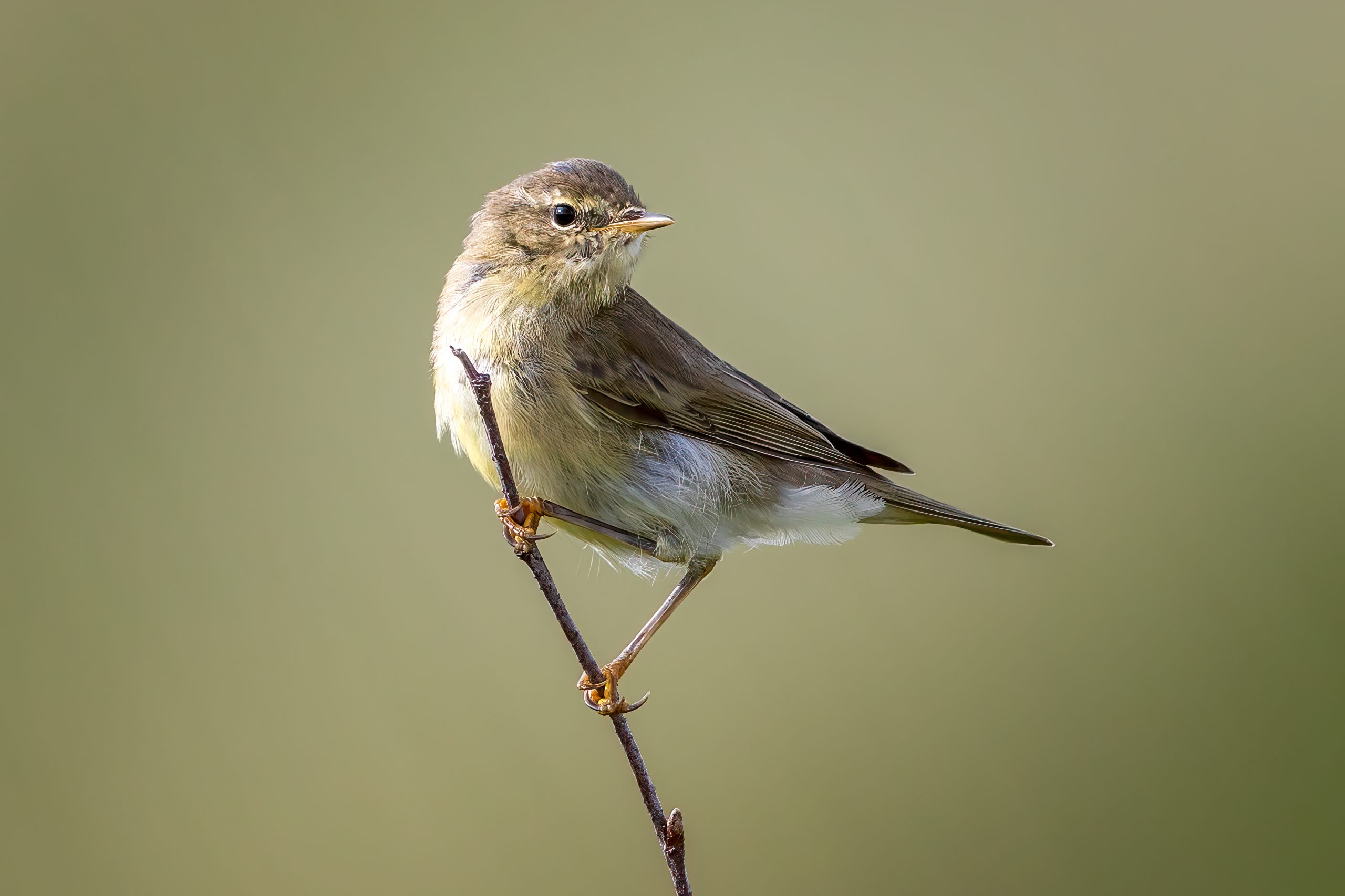Common Chiffchaff
(Phylloscopus collybita)
Description
The common chiffchaff (Phylloscopus collybita) is a small leaf-warbler that breeds across much of Eurasia and winters in northern African and southern Asia. It measures approximately 10 to 12 cm (3.9-4.7 in) in length and weighs around 7 to 8 grams (0.25-0.28 oz). It is primarily olive-green to greyish-brown on its upperparts and off-white below, with distinctive dark legs and a beak that is dark above and lighter below. The common chiffchaff is named after its distinct and non-melodious song, where it goes “chiff-chaff-chaff-chiff-chaff-chaff” in the rhythm of a ticking clock, and it is among the easiest bird songs in Europe to distinguish from other birds’ songs. The Siberian chiffchaff (Phylloscopus collybita tristis), a subspecies, has a slight variation in its song and plumage, and is by some considered a separate species.
The distinct song is the best way to distinguish the common chiffchaff from the willow warbler (Phylloscopus trochilus), which is very similar in appearance. The willow warbler has a much more melodious song, with soft tones in a repetitive descending whistle, and is not at all similar to that of the chiffchaff. There are some differences in appearance, as the chiffchaff has markedly darker to almost black legs and an often less pronounced eye stripe. Additionally, the willow warbler often exhibits more yellow coloration in its plumage, with the chiffchaff often having more of a dull brown to grey plumage. This is more a tendency and not a fixed rule, as there is great variation between individuals, and younger birds can exhibit more yellow in their plumage in both species.
Diet & habitat
The common chiffchaff favors woodlands, gardens, and shrub areas with abundant leaf cover. Both the chiffchaff and the willow warbler are found in similar habitats, but the chiffchaff shows a lesser tolerance for altitude, thus it is found less often in mountainous and upland environments than the willow warbler. The diet of the common chiffchaff mainly consists of insects and larvae, which it adeptly picks from leaves and branches, often flitting acrobatically through foliage to catch its prey.
Migration
The common chiffchaff is a mostly migratory species, with many northern populations traveling to the Mediterranean, southern Europe, southern Asia, and northern Africa to overwinter. Migration occurs in the autumn to escape the colder temperatures and reduced food availability in their breeding territories. Common chiffchaffs arrive at their breeding grounds quite early in spring, and at least a few weeks earlier than the willow warbler. They also leave for their wintering grounds a bit later, with some leaving in October (and even November in rare cases). Some populations, particularly those in the more central parts of their range, such as western and southern Europe, are resident year-round.
Nesting
Breeding season begins in late March through to August, but with slight variations depending on locality. The common chiffchaff constructs its nest on or near the ground, hidden in dense vegetation. The female lays 4 to 7 eggs, which she incubates for about 13 to 15 days. Chicks are fed by both parents and fledge approximately two weeks after hatching, though they remain dependent on parental care for some time thereafter. The common chiffchaff can produce two broods in a single breeding season.
Status
The common chiffchaff is widespread and common, with a large population size. Numbers are believed to be increasing across its range, and it is listed as least concern on the IUCN Red List.




